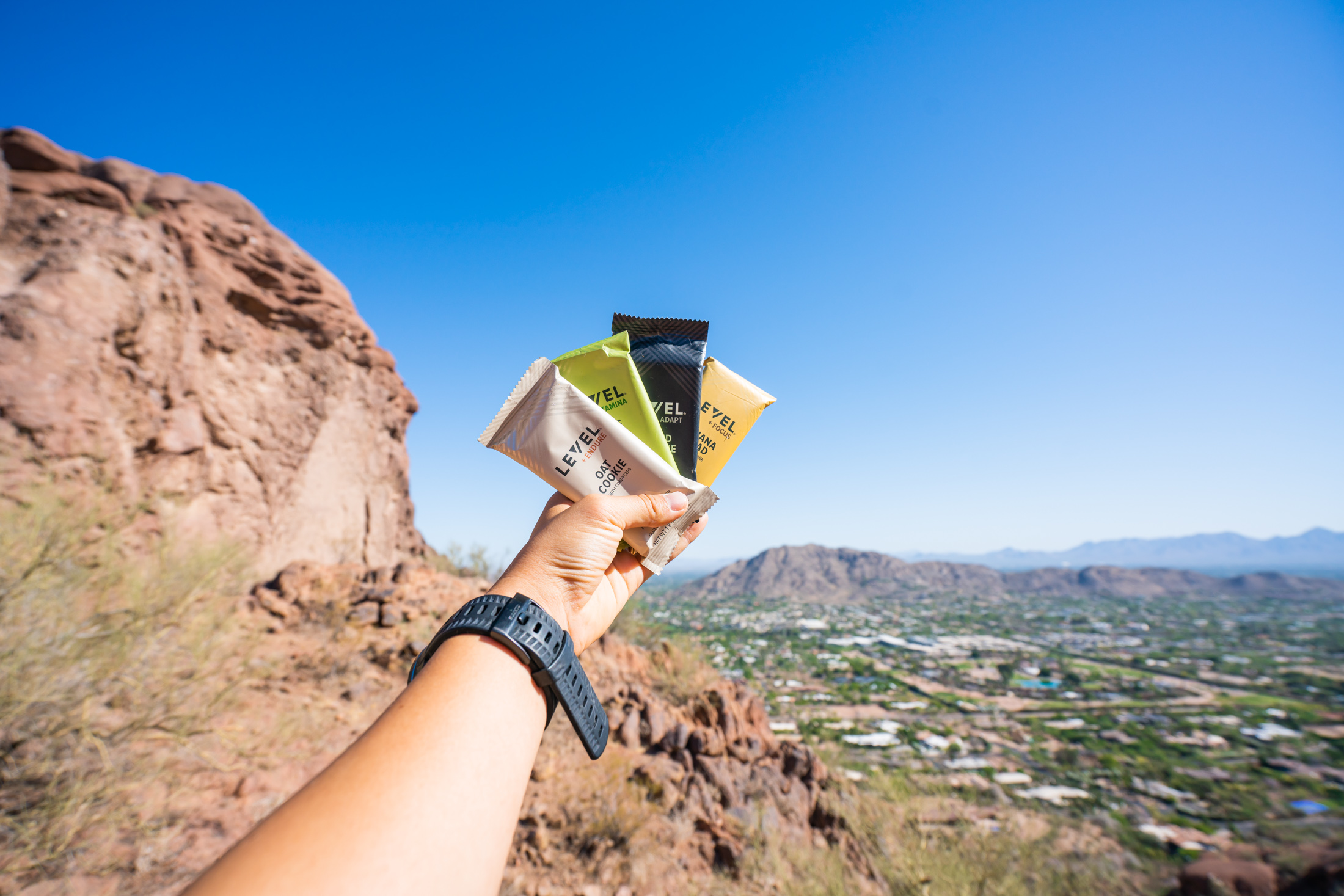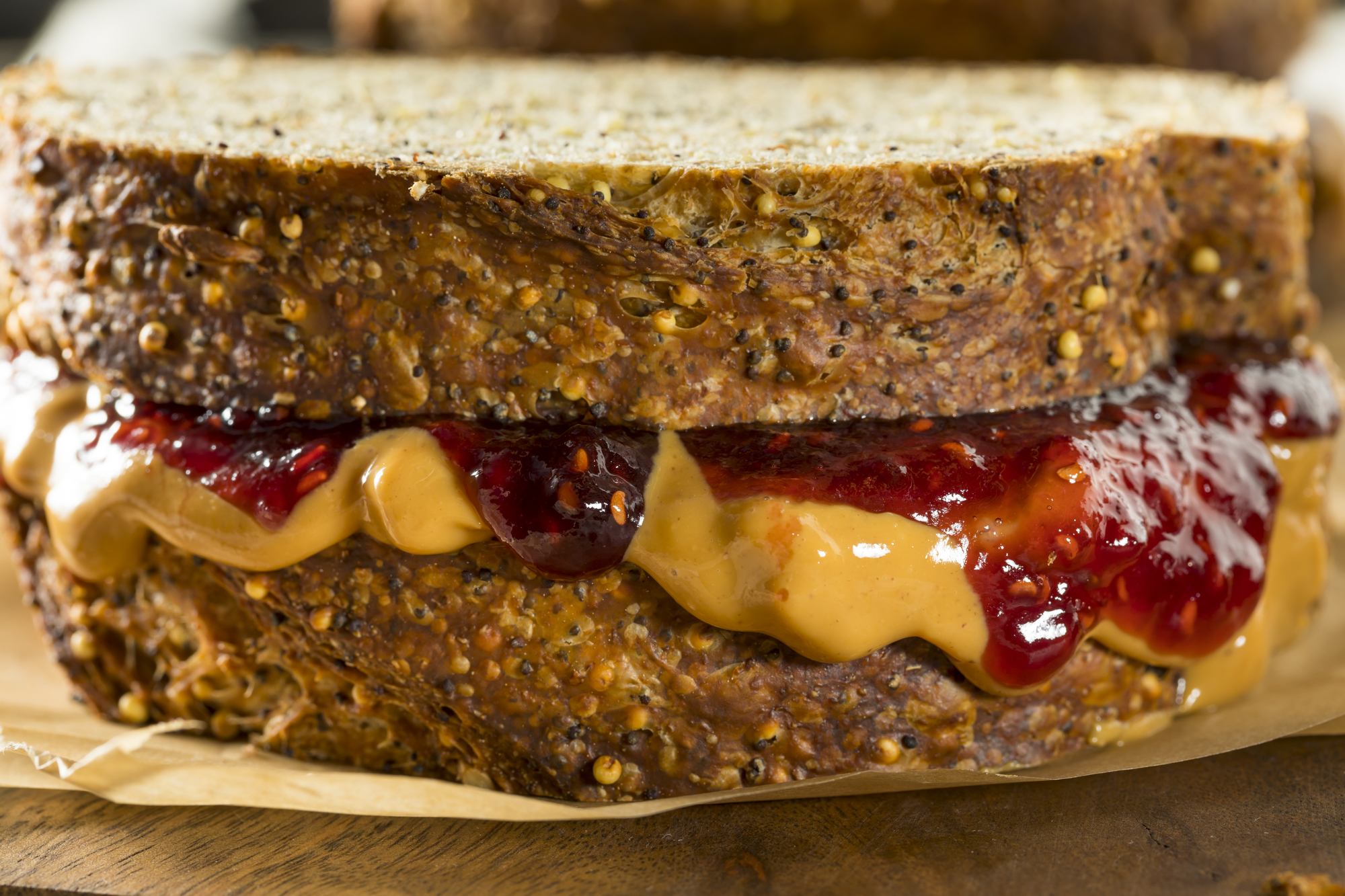
Types of Sandwiches for Hiking and Why IT Will Fuel Your Body for a Hike!
Hikers know covering several miles of rugged terrain at a time can be taxing and energy-sapping. That is why they pack energy-dense foods in their backpacks to keep them going. However, when you are hiking, it’s important that the food you eat is easy to pack, easy to eat, and leaves minimal cleanup. For example, packing pasta that needs to be reheated is probably not the best idea.
If you are going on a short hike (couple miles, under 3 hours), you can get by with eating only protein bars. My favorite Dairy Free, non-GMO bars are from Level Foods,
However, if you are going on a longer hike, you will want to make yourself a sandwich! All you need is a bit of creativity and a clear understanding of the different types of sandwiches for hiking and why those ingredients will fuel your body for a hike.
Why is it Important to Eat During a Hike?
According to the Mayo Clinic, hiking can burn more calories than moderate swimming. A 160-pound person can spend as much as 438 calories for every hour of hiking. The figure can be higher for heavier hikers.
People who intend to hike for 4 to 6 hours can spend about 1,750 to 2,700 calories during the trek alone. Your body will still burn calories for other vital functions, including breathing and other movements.
The National Health Service says that adult men should get a daily calorie intake of about 2,500. On the other hand, women should get 2,000 calories per day. The recommendations vary, depending on age, physical activity level, and metabolism.
Given that the hike alone will already require about 1,500 to 2,500 calories, eating during a hike is essential to maintain and support vital body functions. It also helps hikers complete their adventure.

What Type of Nutrition is Important for a Hike?
Hiking requires plenty of energy. That is why a hiker’s nutrition should consist mainly of carbohydrates and proteins. Experts also recommend fats and fatty acids because they contain more calories per gram than carbohydrates and proteins. There are many types of sandwiches for hiking that will give you all of these critical nutrients.
Carbohydrates
Each gram of carbohydrate can provide four calories. Vegetables, bread, and fruits are excellent carbohydrate sources. That is why many hikers love making sandwiches for hiking.
The body processes the carbohydrates, breaking them down into simple sugars. The more complex the carbohydrate, the longer is the metabolic process needed to turn it into simple sugar.
This is the reason why many hikers also bring fruits, cheese, honey, and candies. These food items contain simple carbohydrates, allowing hikers to get the energy they need instantly.
Protein
A gram of protein provides the body with the same calorie count as a gram of carbohydrate. However, it takes a longer time for the body to process this nutrient, making its energy last longer.
This nutrient is also essential for repairing damaged tissues because of the hike. As one moves through the trails, there is always the risk of injuring muscle tissues. Proteins provide the crucial elements that help repair and regenerate these tissues.
Sugar
As mentioned, sugars are essential for giving the body readily usable energy in the form of glucose, fructose, or lactose. The body no longer processes these nutrients because they are already in their simplest form.
Healthy Fats
A gram of fat delivers nine calories, making it a highly valued nutrient among seasoned hikers. However, it is essential to pick the correct type of fat, as “bad” fat has been linked to health concerns, such as heart disease, liver problems, cancer, and certain chronic degenerative diseases.

How Do You Pack a Lunch for Hiking?
Bringing hiking food items to eat during a hike takes more than preparing them. You must also learn how to pack them properly.
Correct Placement
It would be best to place your hiking food on your backpack’s top section. Pack your bag with your essentials. Secure your food before closing the top. This is especially important for sandwiches that can squish easily.
It would also be ideal to store your food in a hard but lightweight container. It is always a good idea to store sandwiches for hiking this way, allowing hikers to retain the food’s freshness and shape.
Leak-proof Storage
If packing liquid food items or solid foods with liquid components, it is always best to store them in a leak-proof container. Putting the lunchbox upright can also prevent spills.
Sanitation
Always bring hand sanitizer when hiking, allowing you to disinfect your skin before handling your food. Hiking often involves grabbing onto tree branches, rocks, and other objects that may contain harmful microorganisms. Having a sanitizer ready should make your hiking meal safe.

What Kind of Food Should I Bring on a Hike?
A day of hiking requires energy not only for navigating the trail. Sufficient energy also ensures the optimum functioning of vital body organs during the hike. That is why serious hikers choose energy-dense and protein-rich foods whenever they go on an adventure in the trails.
Sandwiches
Sandwiches for hiking make excellent food items for hikers. There are many types of sandwiches for hiking, but you should always make sure your sandwich has enough protein in it. A meat-containing sandwich can provide hikers with as many as 500 calories. Vegetarian sandwiches generally contain fewer calories, but you can always find good options that will pack protein and sugars in your vegetarian or vegan sandwich!
Peanut butter, chicken, turkey, and beef sandwiches can give hikers exceptional proteins and fats, fueling them throughout the hike.
Trail mix
Hikers can also pick a mixture of dried nuts and fruits for proteins and carbohydrates, respectively. One can place a handful in the pocket and munch it along the trail.
Fresh or dried whole vegetables or fruits
Carrots, oranges, apples, and bananas are always excellent trail foods. These food items provide carbohydrates and sugars that hikers need for energy. Fresh fruit can be much heavier because they carry more water content, so if you are looking to swap out weight look for dried fruits. For example, instead of a fresh apple, go for dried apple crisps.
Dried, shelf-stable jerky
Beef, salmon, or poultry jerky are excellent sources of protein and fat. These nutrients supply hikers with longer-lasting energy than carbohydrates.
Energy / protein bars
Protein bars are calorie-dense food items, always handy on the trail. You can slide a bar easily in your pocket or pack for instant an energy boost. Level Foods is my favorite for its healthy ingredients and great taste.

My Recommended Sandwiches for Hiking
People love packing a sandwich for hiking trails because they are handy, easy to prepare, and pack all the energy and nutrients one needs to complete the hike. As hiking food, sandwiches offer versatility and simplicity. Hikers can get two bread slices and fill it with their protein-rich and energy-dense ingredients. There are many different types of sandwiches for hiking…
Peanut Butter & Jelly Sandwich
A quintessential trail favorite, the PB&J sandwich offers sufficient calories for hikers to cover several miles without feeling the crunch. The secret is in the protein and fat-rich peanut butter, providing a steady source of energy for trekkers and hikers.
This hiking food can provide hikers with about 378 calories, 42% of which comes from fat. The sandwich also contains 15 grams of sugar and 12 grams of proteins, together with vitamin C, iron, and calcium.
Here is a grilled peanut butter & jelly sandwich one can try to bring on a hike. Its grilled nature helps minimize the risk of turning the sandwich into a soggy mess.
Ingredients:
- Two slices of white bread
- Two teaspoons of full-fat butter
- Two to three teaspoons of peanut butter
- Two to three teaspoons of fruit jelly
Hummus & Vegetable Sandwich
This sandwich is another hikers’ favorite. One can never go wrong with these sandwiches for hiking because they offer enough versatility to use your preferred veggies. This hiking foo can provide 325 calories, 39.7 grams of carbohydrates, 14.3 grams of fat, 12.8 grams of protein, and 6.8 grams of sugar.
Preparation is pretty straightforward. However, it would be best to make this sandwich at least four hours before you head to the trails. Refrigerate it before packing it in your backpack.
Ingredients
- Two white bread slices
- Three tablespoons of hummus
- Choice vegetables, including mashed avocados, salad greens, cucumbers, carrots, and red bell peppers
Turkey & Cheese Sandwich
Here is another sandwich worth bringing on a hike. Turkey provides hikers with the proteins they need for long-lasting energy without the fatty consequences of other meats. Cheese also provides exceptional proteins and wholesome fats, perfect for a grueling day at the trails.
A turkey & cheese sandwich can deliver 372 calories, 32 grams of carbohydrates, 4 grams of sugar, 24 grams of protein, and 17 grams of fat.
Ingredients
- Two white bread slices
- Two to three teaspoons of mayonnaise
- A quarter-pound of deli turkey, thinly sliced
- A slice of 1-ounce provolone cheese or any other cheese
- Four tomato slices
To ensure the tomato doesn’t make the rest of your sandwich soggy, you should layer it in between slices of cheese. Another alternative is taking a piece of romaine lettuce and using that to block the tomato juices from your sandwich bread!
Conclusion
Learning the types of sandwiches for hiking and why those ingredients will fuel your body for a hike can help you get a more fulfilling outdoor adventure. You will have more energy to complete your hike and do many things on the trail without feeling tired or fatigued.
Hikers will also have a ready supply of nutrients for repairing damaged or injured tissues during and after the hike.
My site may contain affiliate marketing links (including the Amazon Services LLC Associates Program), which means I may be paid a commission on sales of those products. These are products I fully use and endorse, and my content is not influenced by advertisers or affiliate partnerships.







2 Comments
Thanks for posting it! All great ideas for tasty sandwiches! The best sandwich to take hiking is one that is hearty, portable, and can withstand being carried for a few hours without refrigeration. For more delicious and nutritious hiking lunch ideas check out https://griffithparkhiker.com/nutritious-the-best-day-hiking-lunch-ideas/